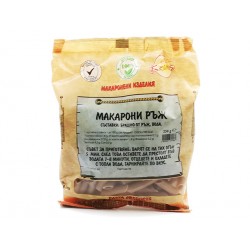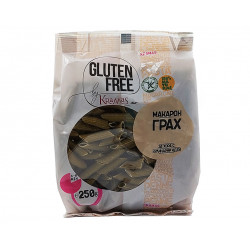* Find a product for a specific disease such as write his name (eg .: Diabetes)
No products

Rise Penne, gluten free, Unifood, 400 g
Rice penne have a pleasant aroma and combine great with any kind of sauce or topping. Gluten Free product.
Package Quantity: 400 g
Origin: Vietnam
Ingredients: view description
Shipping Weight: 0.420 kg
Suitable for: Adults, Children, Diabetics, Vegetarians, Vegans


Product information
Rice pennes possess such a mild flavor that they make a good match for almost any type of sauce or topping, from mild chicken broth to a fiery Szechuan pepper dish. Beyond culinary benefits, one reason to choose rice penne is that they’re gluten-free. It also deliver nutrients in the form of fiber, zinc and iron.
Benefits:
Gluten-free
Gluten is a protein found in wheat, barley and rye that works with yeast to make bread dough rise. It’s also a health problem for people who are gluten-sensitive or have celiac disease. Celiac disease, or sprue, is a genetic disorder in which the immune system reacts to gluten, damages the intestine and causes inflammation that can spread throughout the body. The only way to prevent this damage is to permanently remove gluten-containing products from your diet. Rice is naturally gluten-free, so rice noodles make a good replacement for noodles made from wheat flour.
Fiber and Protein
One cup of cooked rice noodles has 1.6 grams of protein and 1.8 grams of fiber. For men those values represent 3 percent of their daily protein needs and 5 percent of total daily fiber. Women gain 4 percent of their recommended daily intake of protein and 7 percent of fiber from 1 cup of cooked rice penne.
Ingredients:
Rise flour (86%), Tapioka starch (13%), salt, stabiliser: pnetasodium triphosphate (E345 i),
Nutritional values per 100 g:
Energy: 1481 kJ / 345 kcal
Fat: 0.2 g
Carbohydrates: 85 g
Sugars: 2.2 g
Fiber: 1.9 g
Proteins: 3.0 g
Salt: 0.61 g
Method of preparation:
1. Use 1 liter boiling water for 100 g of penne.
2. Put rice penne into boiling water and stir them occasionaly for well done.
3. Cook about 7-12 minutes and put them off in the bastket for drain off.
4. Add one tea spoon of vegetable oil to make penne non-sticky. Garnish ready penne with spices, tomatoes, sauce, chilli, vegetables, sea food or meat and serve.
Packing: 400 g
















